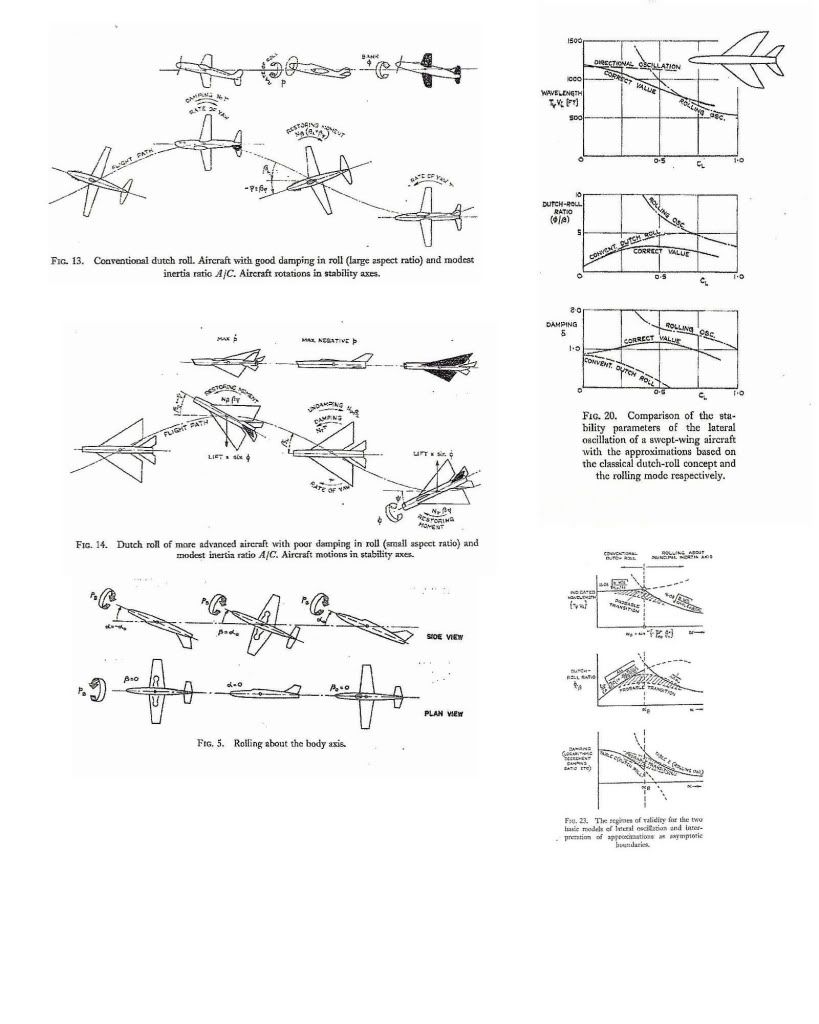 Dozy
Dozy
I think what mm43 was saying was that rudder is *more* effective than aileron in the stall regime, which is undoubtedly true. Obviously at extreme AoA this effectiveness will decrease - possibly rapidly.
Since the aileron effectiveness is just about zero in fully stalled conditions this has got to be true.

But I didn't mean to say that the rudder was completely useless, just that it was operating at about 30% effectiveness relative to normal conditions.
Incidentally, I forgot to mention that the effectiveness is further reduced by the fin being swept by the low energy wing wake at some AoAs
MM43
Not being an aerodynamics expert by any stretch of the imagination, I had concluded that the lateral/transverse stability of the aircraft at such a high AoA and low IAS was balanced on a knife edge, and even with the reduced efficiency of the rudder it would still be possible to induce a roll moment. You doubt that that was the case, but as I stated in my earlier post, the DFDR data is pointing toward it doing just that.
To emphasize what I am getting at, I have blown up part of the Roll trace and and superimposed the Rudder trace on top of it. In addition, an expanded (replotted) 30 second section is shown where (if the traces have been synchronized by the BEA) the rudder is constantly leading the roll and not the other way.
Yes, I see where you are coming from and understand how you might have come to that conclusion; but I am coming, quite literally, from the opposite angle.

When you put an aircraft up at those sort of AoAs funny things start to happen to the lateral behaviour, of which perhaps the most important is that you develop a direct kinematic interchange between roll and sideslip - bottom left in the graphic. When this really gets going the dutch roll disappears and is replaced by an oscillation which depends on roll-sideslip-rolling moment due to sideslip- roll - sideslip. This oscillation really doesn't involve any significant yaw motion. The top right picture in the graphic is the nearest I can find to an A330 situation - the relevant CL would be in the range 1.2~1.4.
I don't think that AF447 got fully into this state, but if you look closely at the estimated sideslip trace then when it is not saturated the peaks in sideslip coincide timewise with the peaks in bank angle, so there is an element of this phenomenon present I think.
Again, if you look at the rudder traces you see that in the timeframe you cite there was no rudder pedal movement worth a damn and that all the rudder movement was commanded by the yaw damper. Philosophically, the yaw damper is a follower and shouldn't be
driving the motion unless the system designers really fouled up and produced an unstable system (which they did not).
More practically, the yaw damper is just what it is called - it applies rudder proportional to rate of yaw, so in this case if you are thinking about the relationship between rudder angle and bank angle you really need to consider the relationship between bank and rate of yaw.
In a conventional dutch roll the rate of roll lags the rate of yaw by about 160deg, so that bank angle will lag rate of yaw (or yaw damper input) by 250 deg. When you get into the roll oscillation mode this may increase a little.
I don't want to sound dogmatic about this because we really don't know where the A330 might sit in the spectrum of possibilities, but it seems to me that the observed relationship between rudder angle and roll could be a big lag rather than a small lead (which would anyway imply some sort of system malfunction).
So in the time interval you quote I see an aircraft with saturated, but ineffective, roll control operating without any effective pilot contributions so that the response is something like the 'natural' one, which in this case is a very lightly damped oscillation more or less confined to roll/sideslip variations. Experience with other aircraft suggests that although the roll oscillation is lightly damped, it won't go unstable.
So far as the drift to the right is concerned I share your puzzlement. It looks like some sort of out of trim coupled with slightly negative spiral stability and if you digitise the estimated sideslip trace ignoring the obvious saturation errors you see an intriguing drift from zero to about -1 deg (left slip) over about 3 minutes. At the same time the rudder trim trace shows a constant 0.5 deg right turn deflection which is at least consistent.
So it is possible that there was a standing out of trim which was being held by the A/P, but whether the numbers stack up I just wouldn't know.